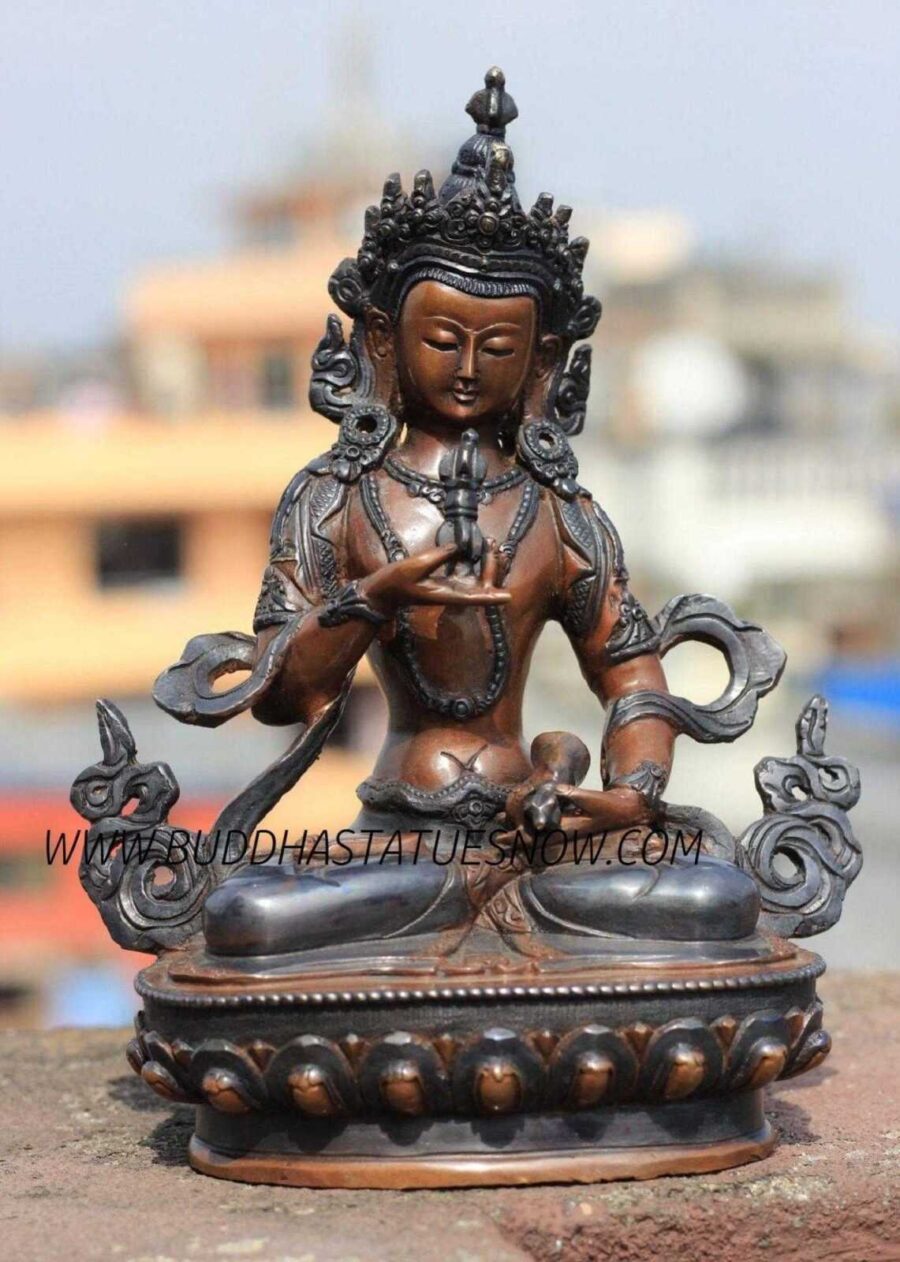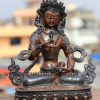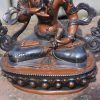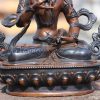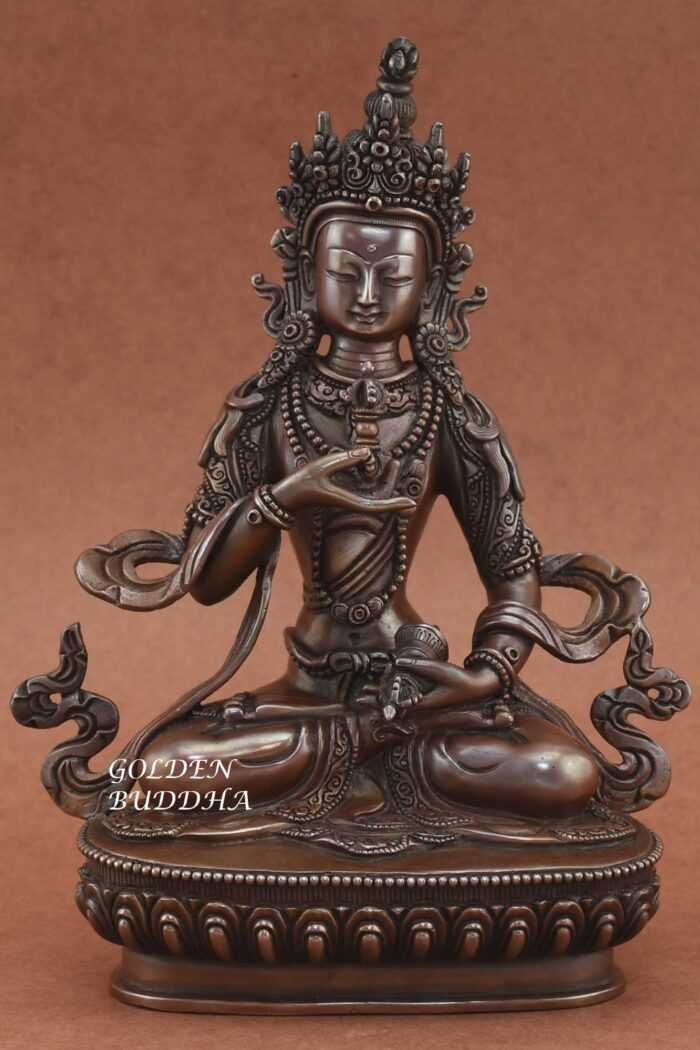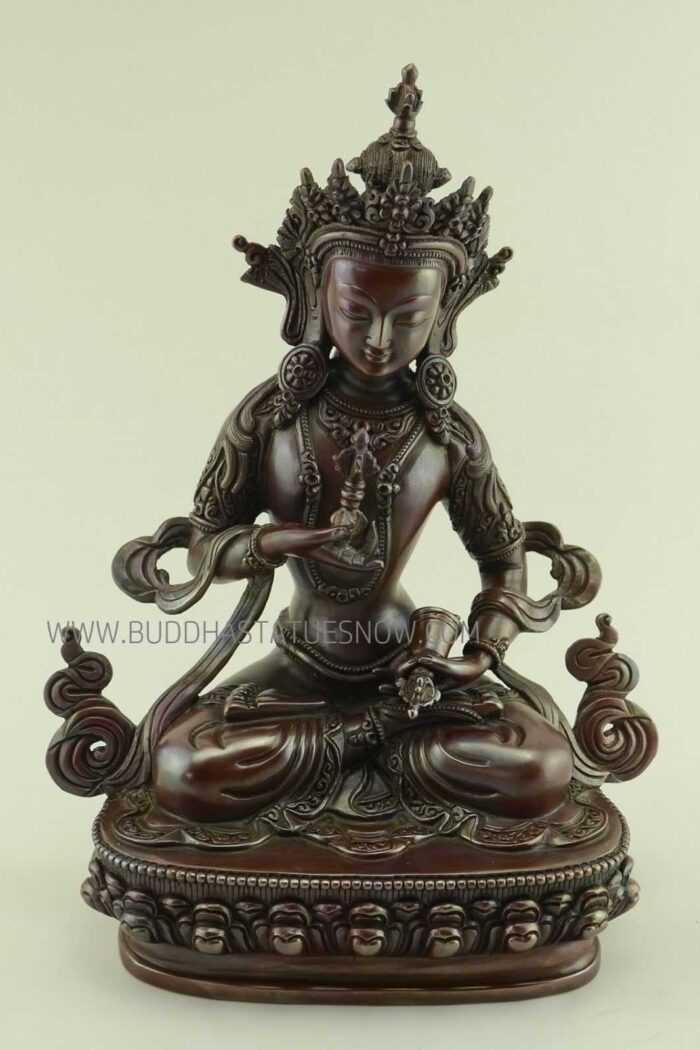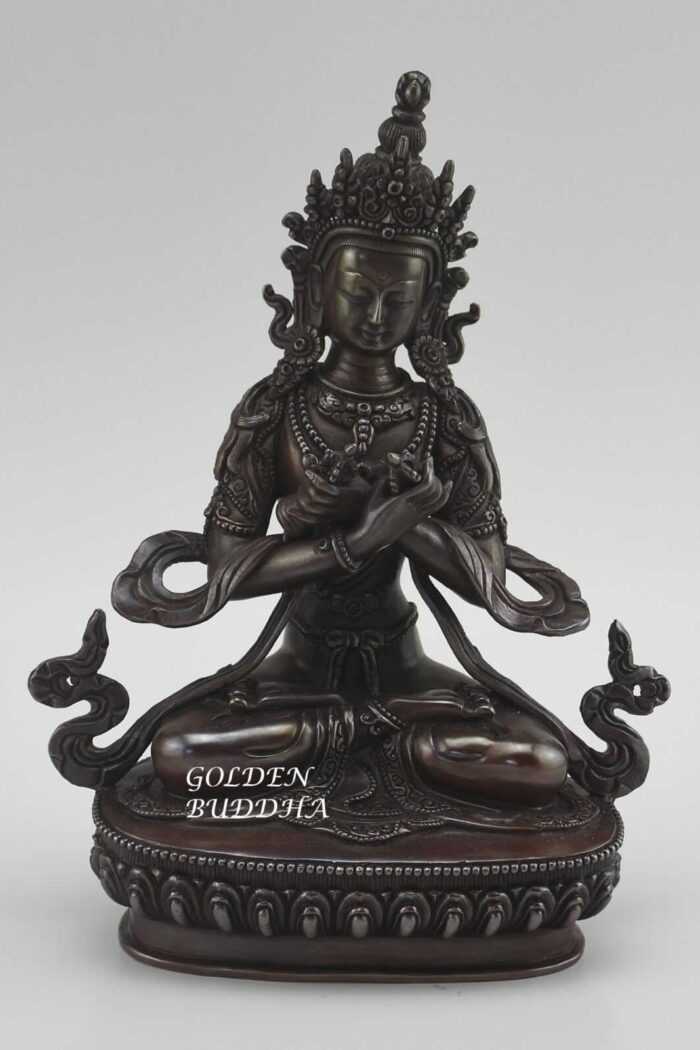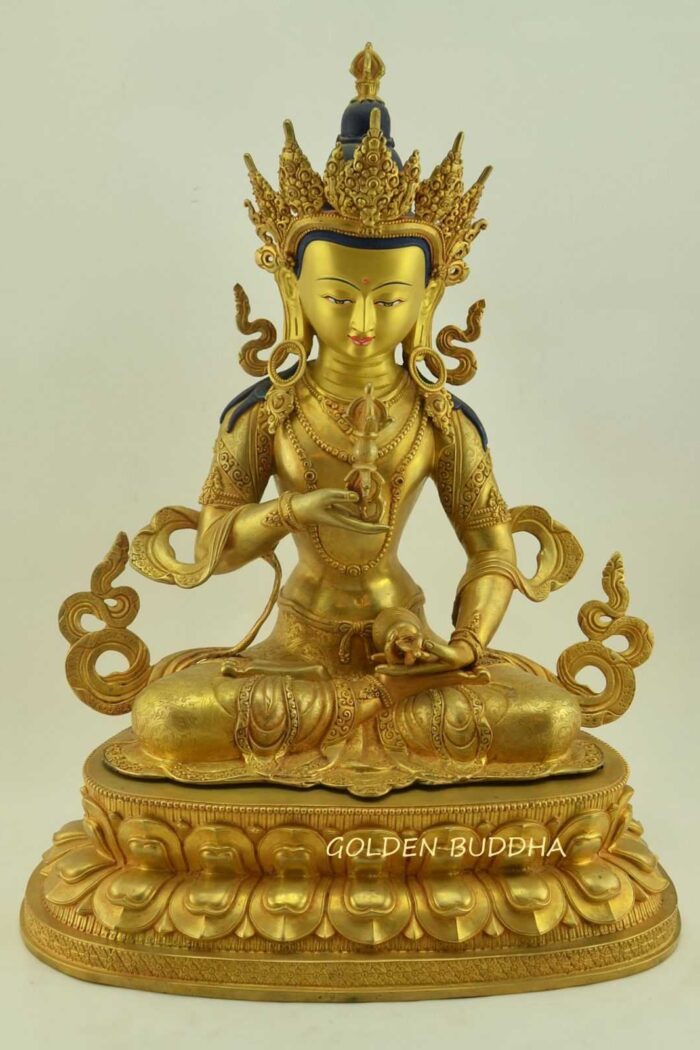The Nepali artisan who completed this Dorje Sempa statue used an antiquated finish combined with traditional details. As a result, Vajrasattva is depicted holding his traditional Vajra and ghanta (bell).
Vajrasattva is believed by Mahayana Buddhists to be an embodiment of the “Trikaya”. The three bodies are the dharmakaya, sambhogakaya and the nirmanakaya. Vajrasattva represents sambhogakaya embodiment of Vajradhara Buddha which is described as a “subtle body of limitless form”. This manifestation is used by the Primordial Buddha to teach bodhisattva followers.
Dorje Sempa Statue Features
Our Dorje Sempa statue is holding the vajra in his right hand and the ghanta in his left. The Vajra is a Sanskrit word that translates as diamond or thunderbolt in English. A Vajra also symbolizes the male attribute of compassion. Compassion is a very important attribute in Buddhist beliefs. As a result, this Dorje Sempa statue carries a meaning of great significance.
Vajrasattva is holding the ghanta (bell) in his left hand. Similar to the Vajra, ghanta also carries important significance. This is because the ghanta represents the feminine attribute of wisdom.
The use of these two symbols is the classic depiction of Vajrasattva statues. As a result, the statue carries the essence of enlightenment. This is because it is the joining of compassion and wisdom in devotees that allows access to Nirvana. Click here to learn more about Vajrasattva.


